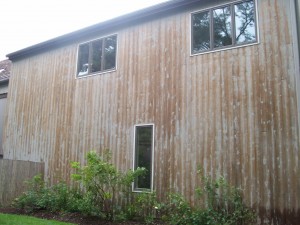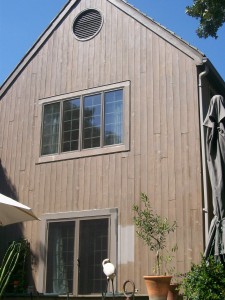Investigating the cause of peeling paint is critical to doing proper and long-lasting paint restoration, especially for exterior repaint projects. Skipping that step can easily lead to incomplete surface preparation and result in premature paint failure. Read on for an illustration of this principle.
Someone to whom I had given a house painting proposal four years earlier called to tell me how sorry she had been for not hiring my company to repaint her house. Within six months, her new paint job had started to peel. She said that she had chosen a lower price at that time. She said that she was not going to make the same mistake again and wanted Painting in Partnership to do the paint restoration work on her house this time.
Indeed, the South side of her house did show extensive peeling: the paint was peeling down to the bare wood. However, a cursory review of the rest of her house did not reveal much of a peeling issue. What was going on to cause the paint to entirely delaminate from the wood siding?
Upon closer examination, we noticed that there was a lot of dead wood fiber attached to the back of the paint chips. It is a known fact that paint cannot adhere to dead wood fiber. We then proceeded to test the adhesion of the paint surfaces that appeared as stable and gave no sign of peeling only to discover that the paint was coming off in sheets! So, even though the paint film gave no sign of impending failure, there was no adhesion between the paint film and the siding. It was only a question of time before it all peeled away. Our theory for what may have caused the problem was that the wood may have sat too long in the elements before first getting coated, but we could not know for sure.
Having diagnosed the problem, I approached the client with a prescription for how to remedy the situation:
– The paint had to come off wherever possible.
– The siding had to be completely sanded to remove all the dead fiber.
– We recommended a high-built, tinted, adhesive primer to ensure that the paint that had not come off would continue to stay put.
All this additional preparation work took about 110 hours of labor, which the client gladly paid for. Our client got what she wanted all along: a long-lasting, good looking paint restoration job! Eighteen months later, there is no peeling paint anywhere on her house.









 Follow
Follow

nice post ,
i like this investigation.)